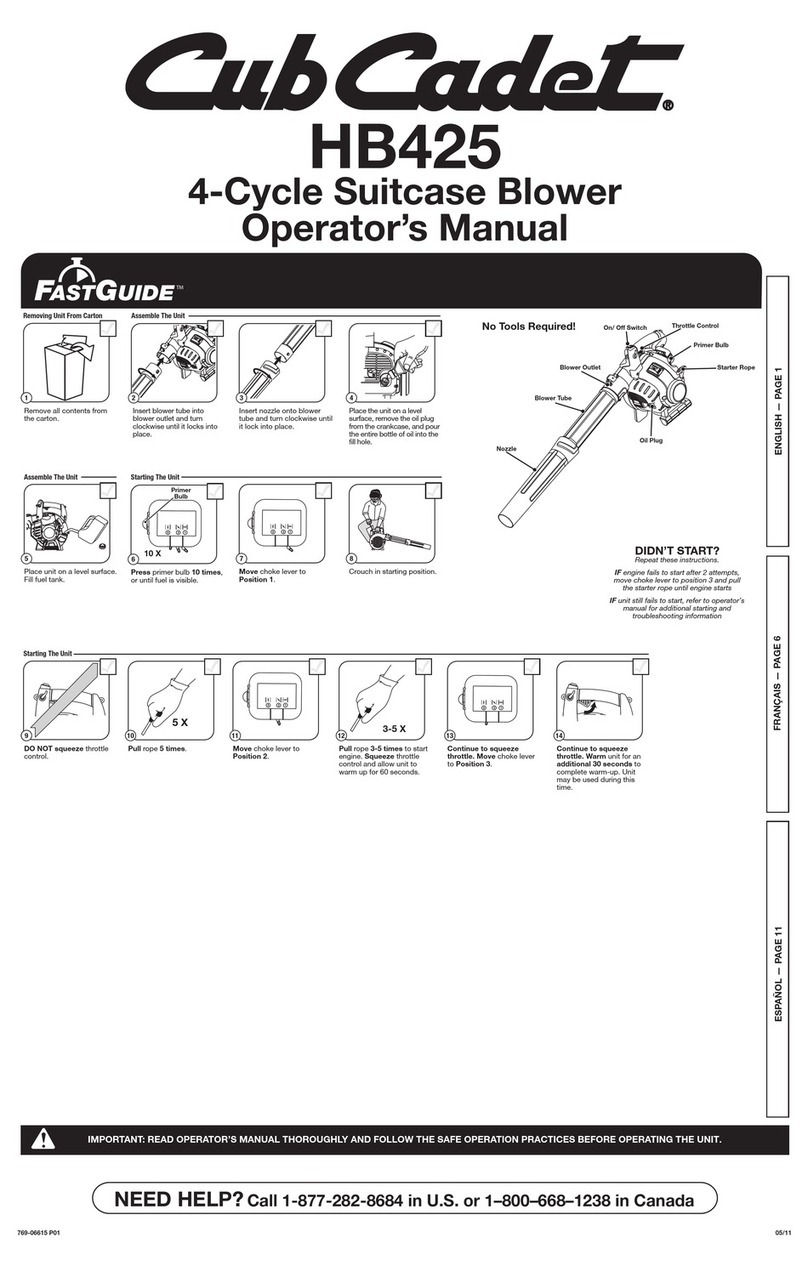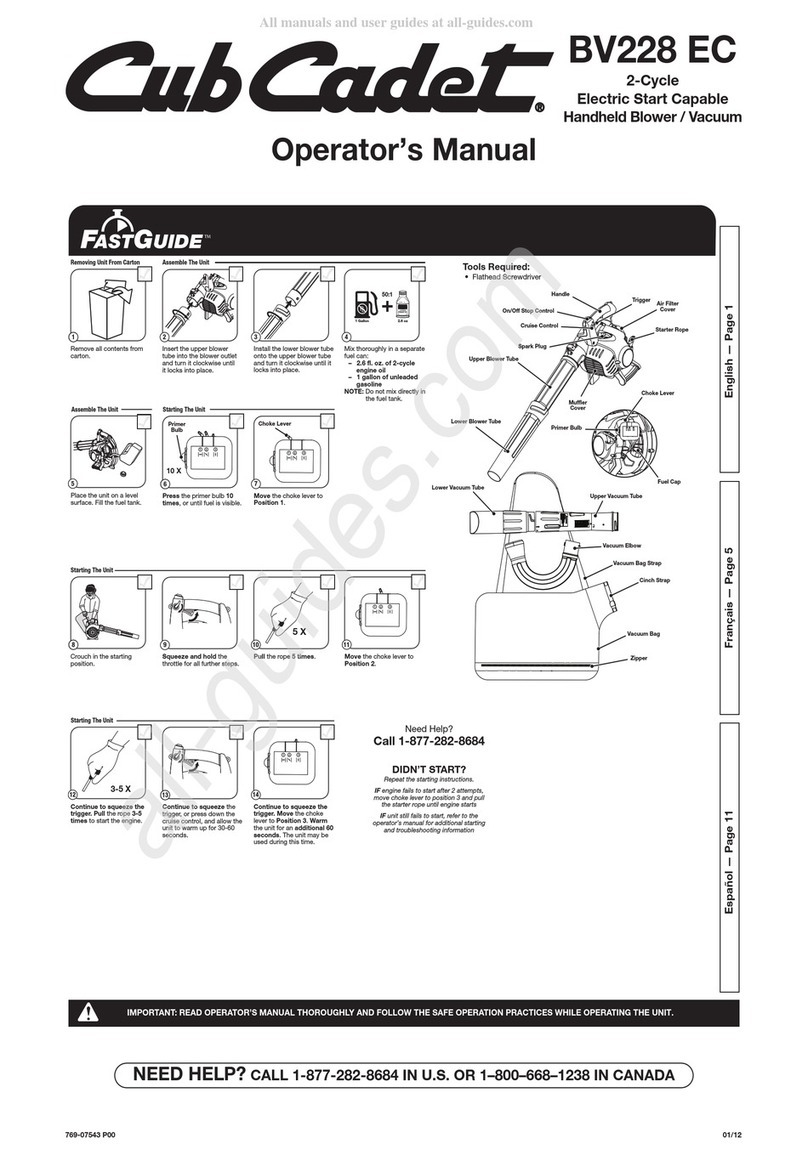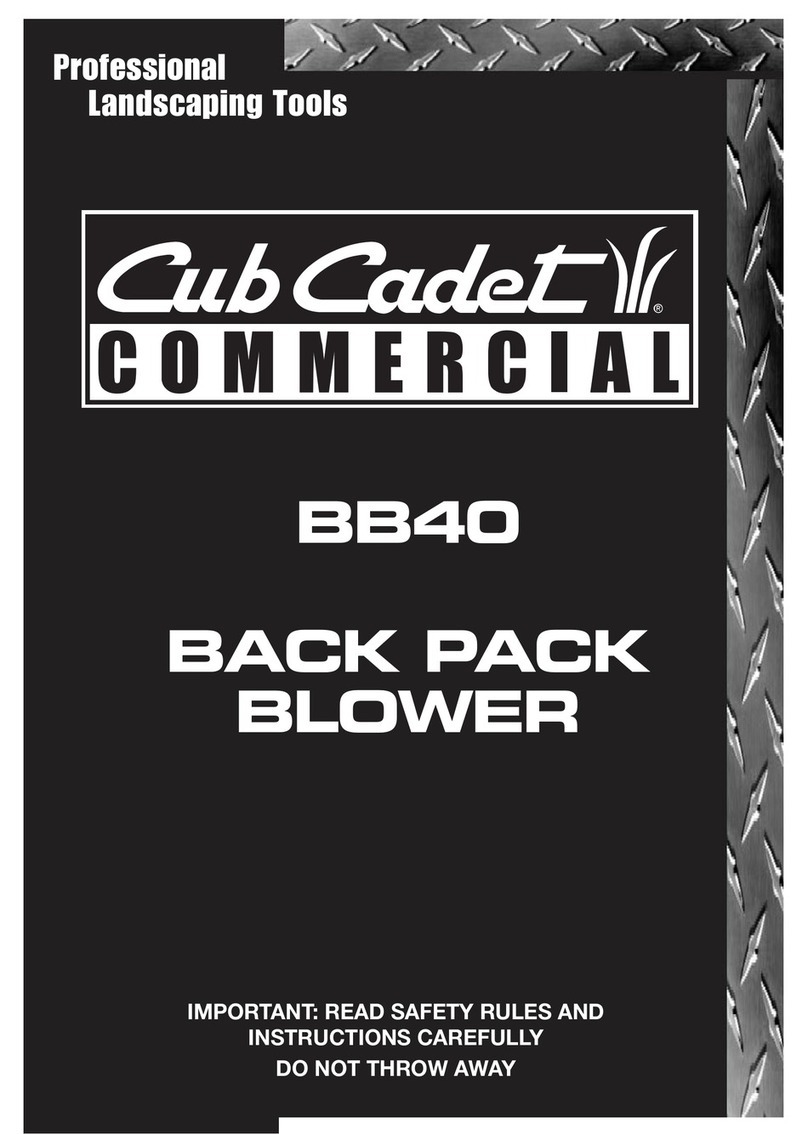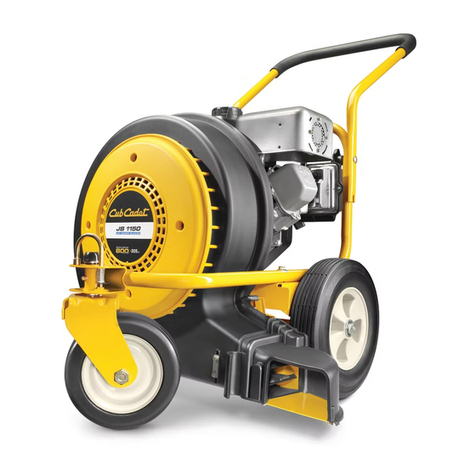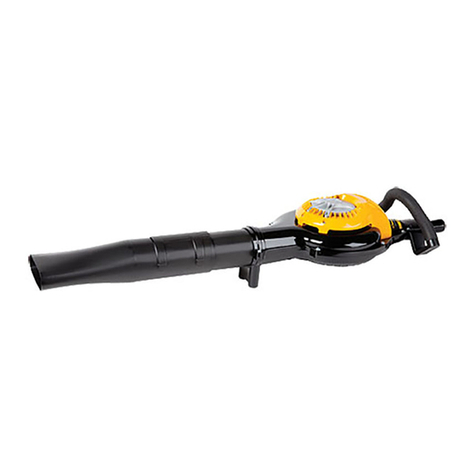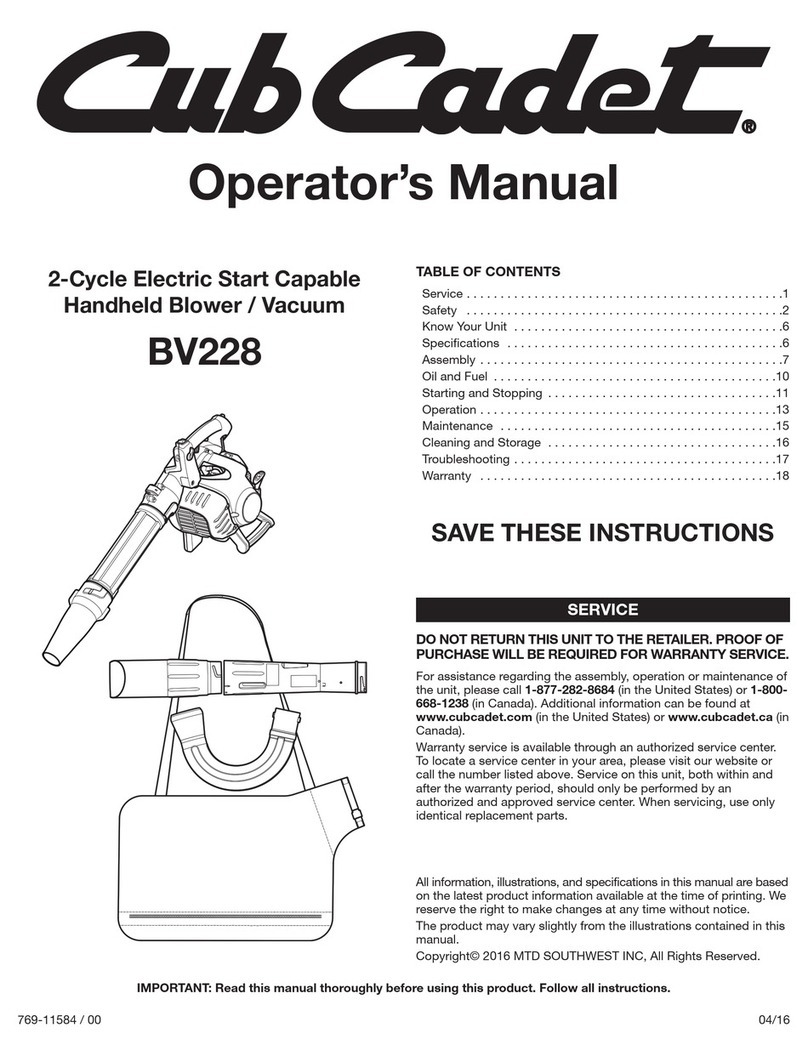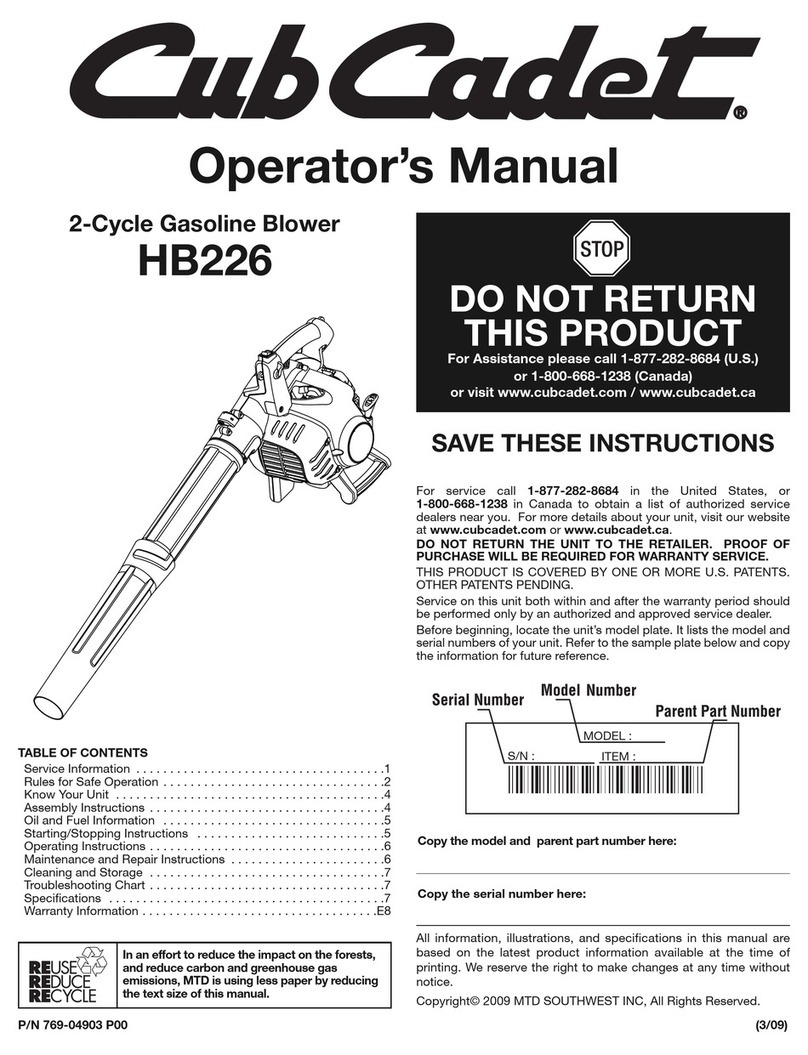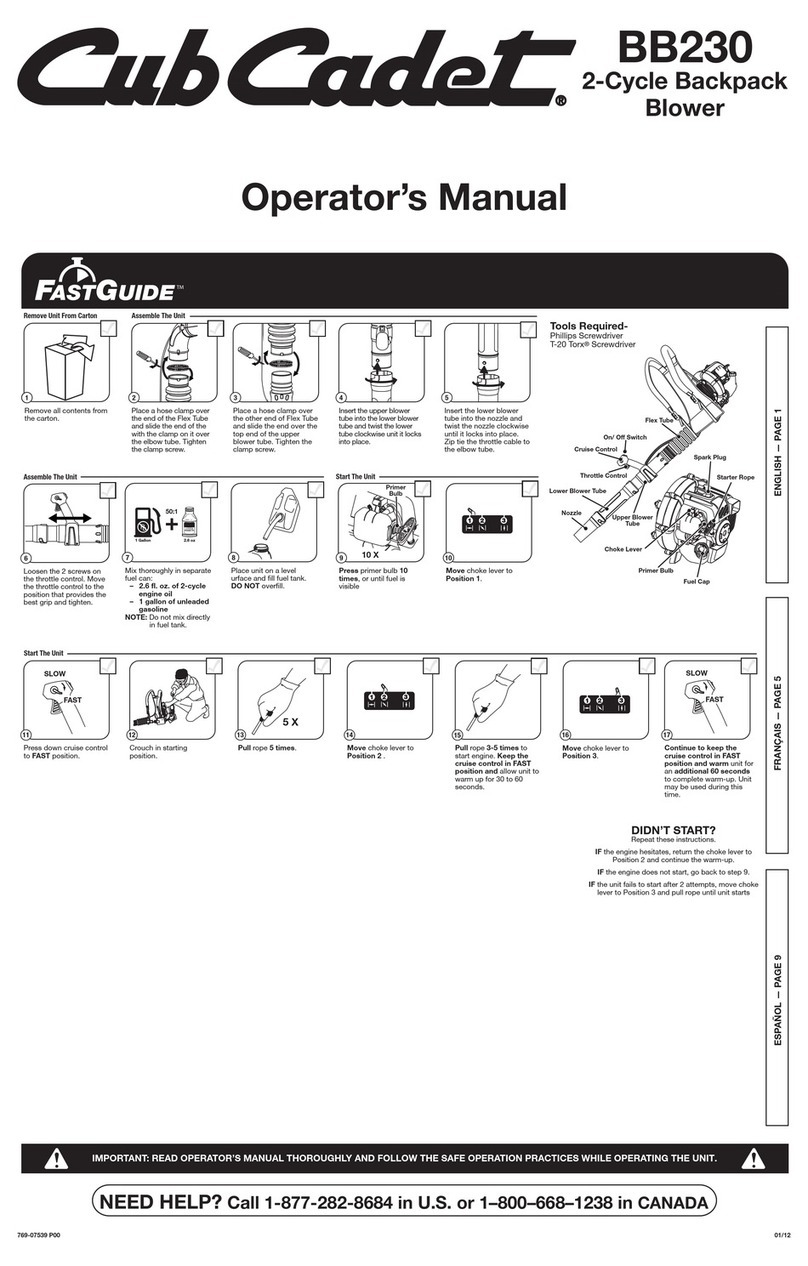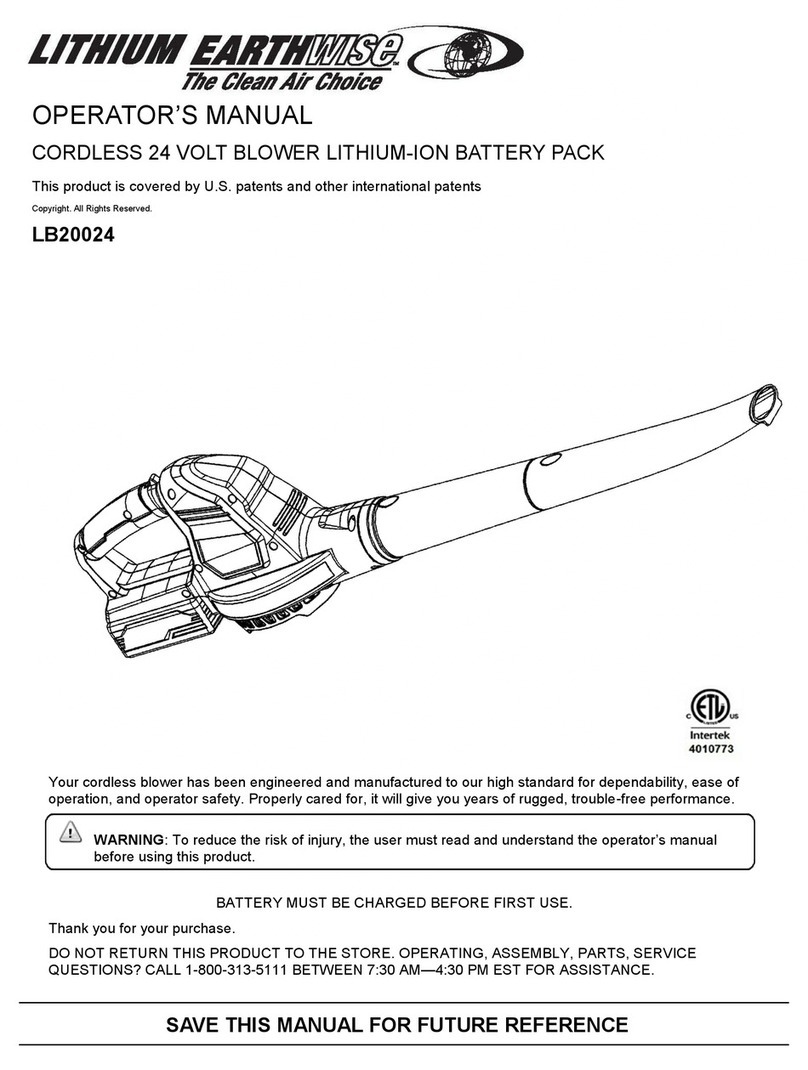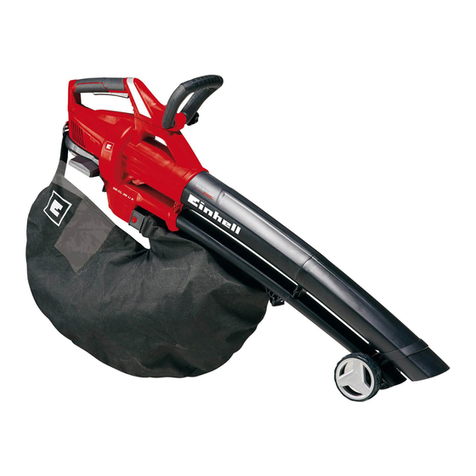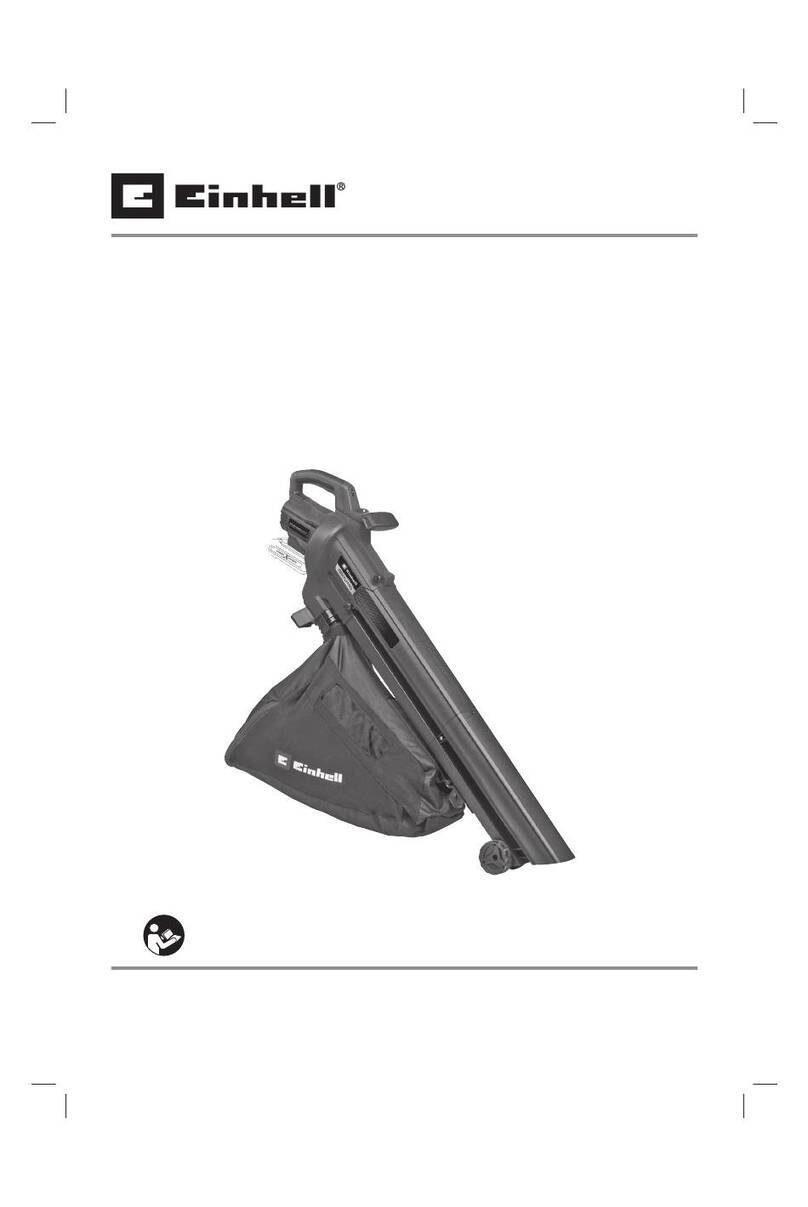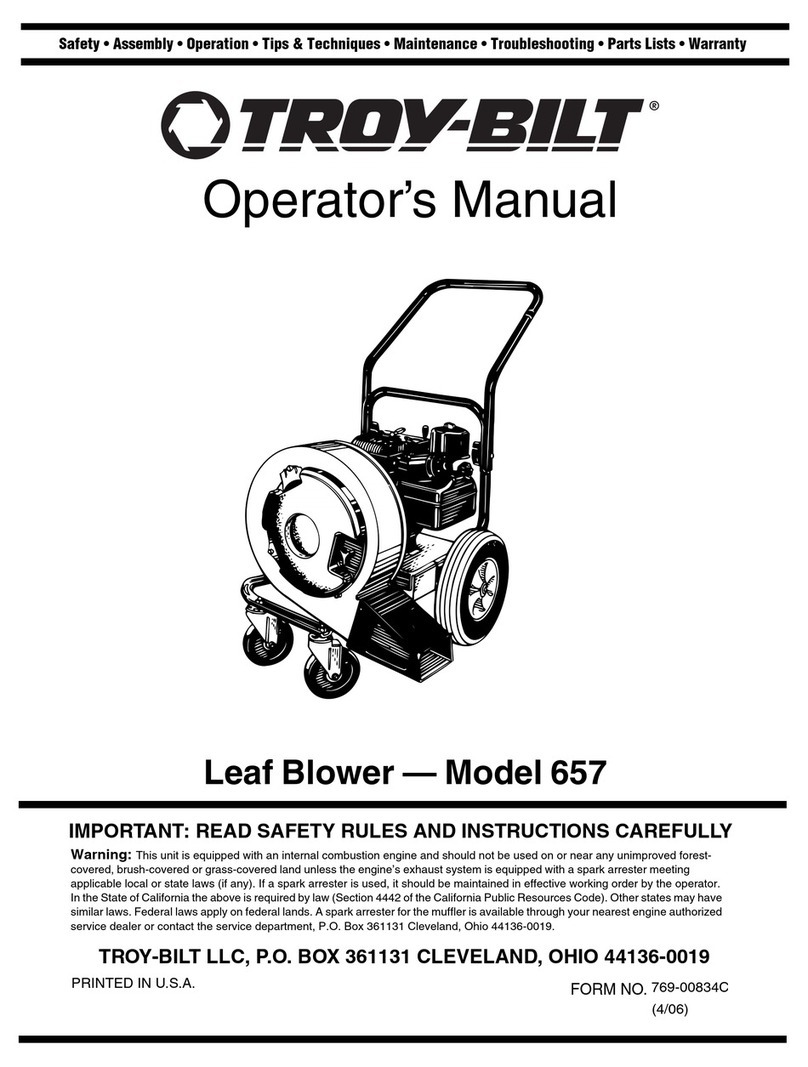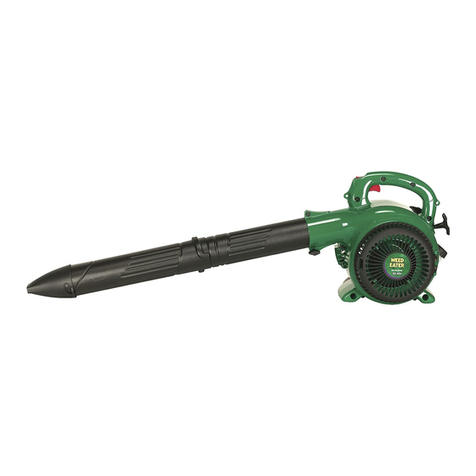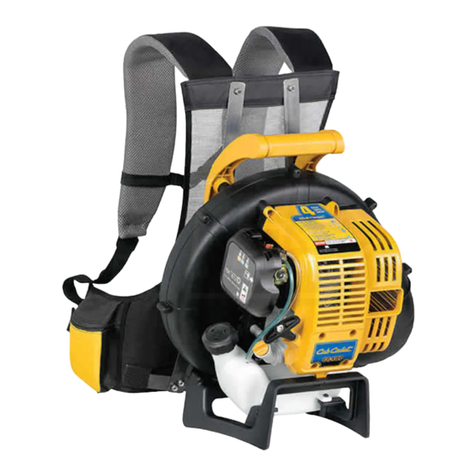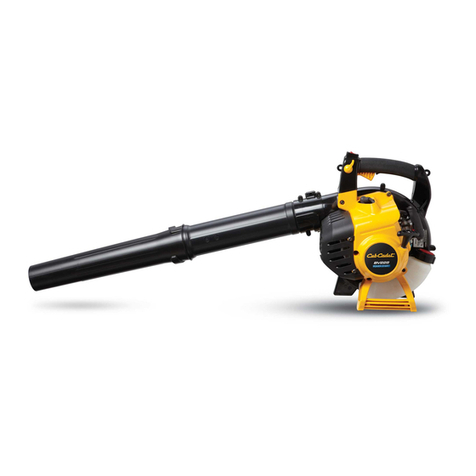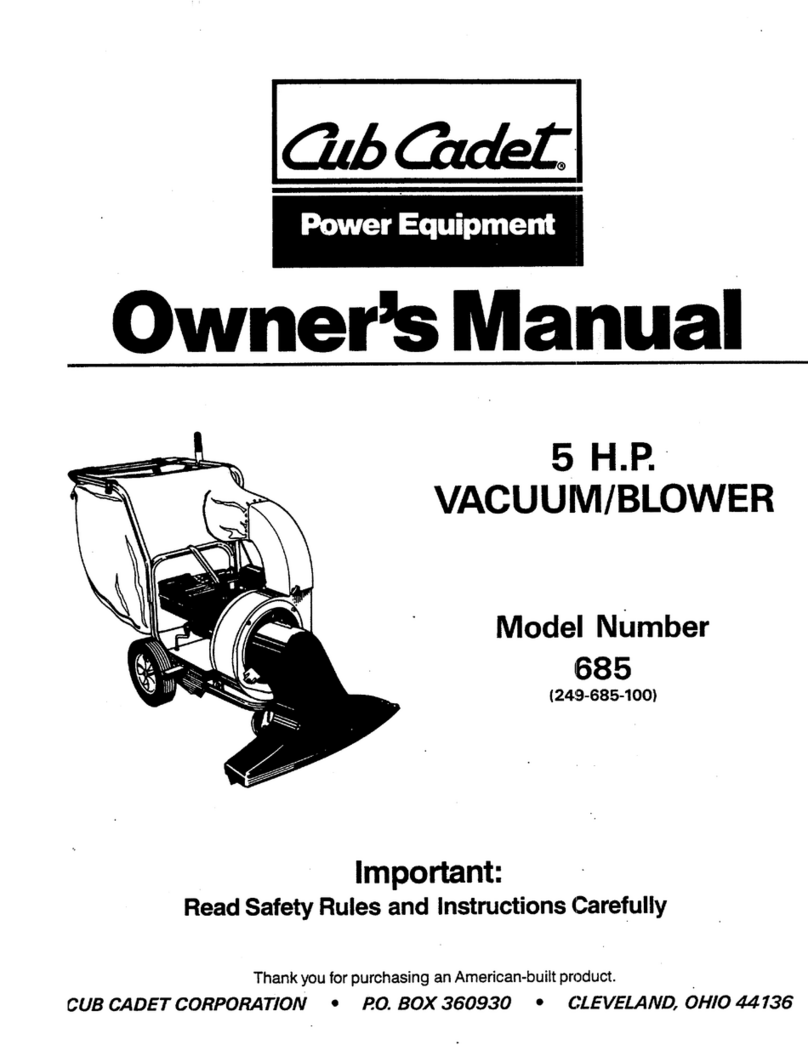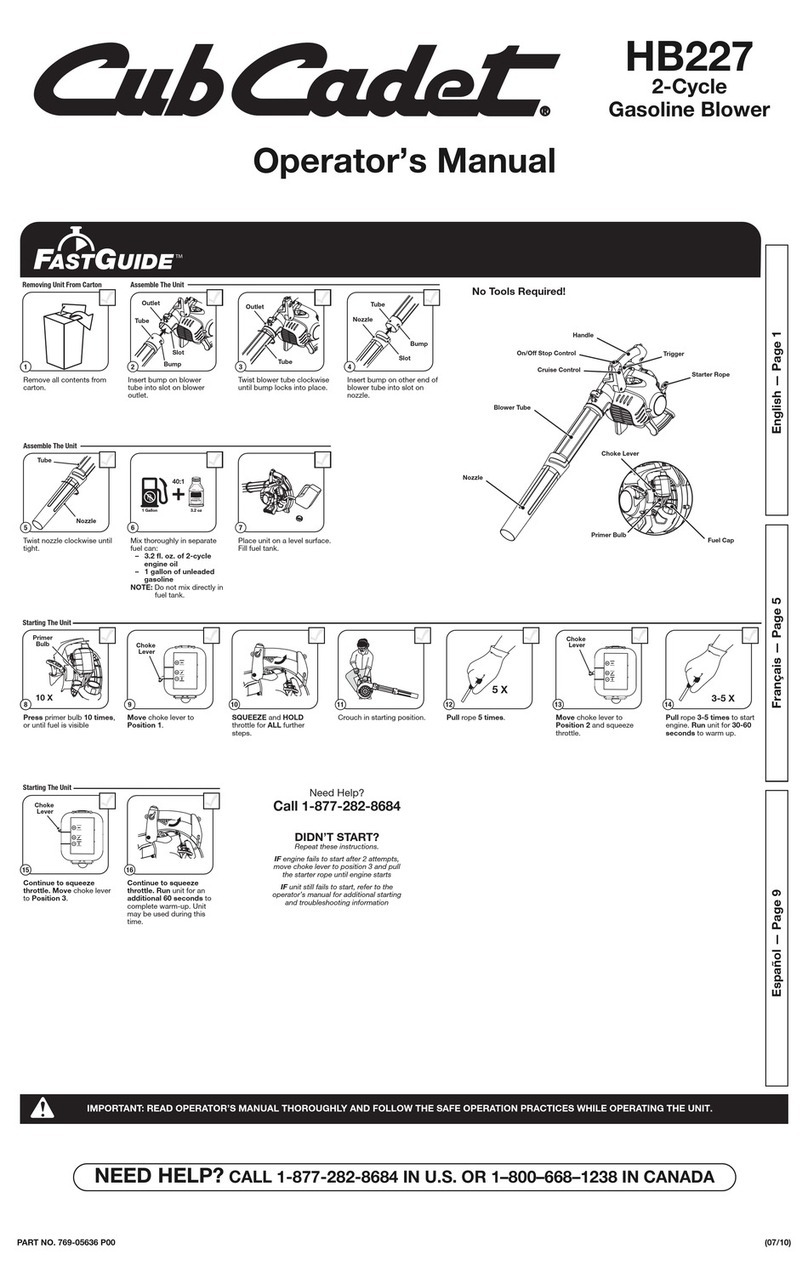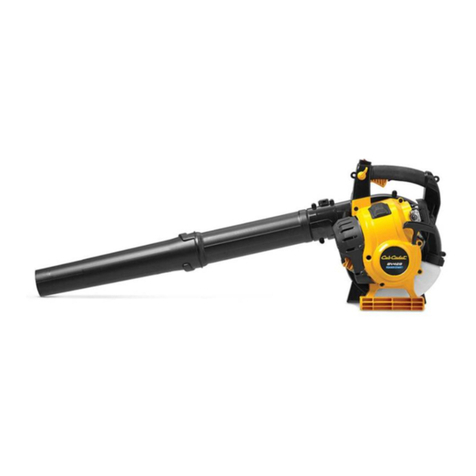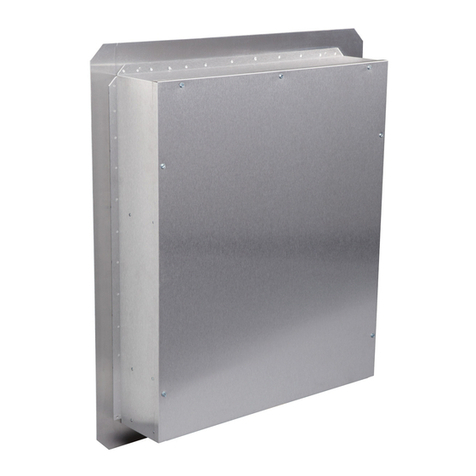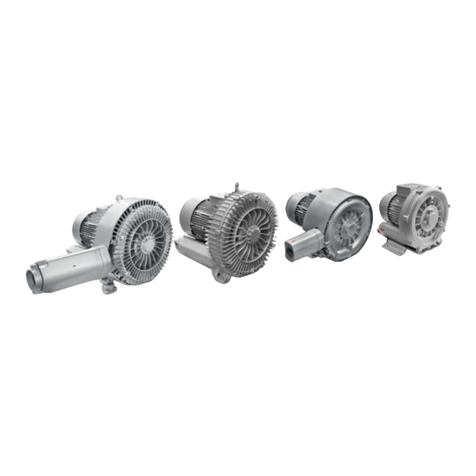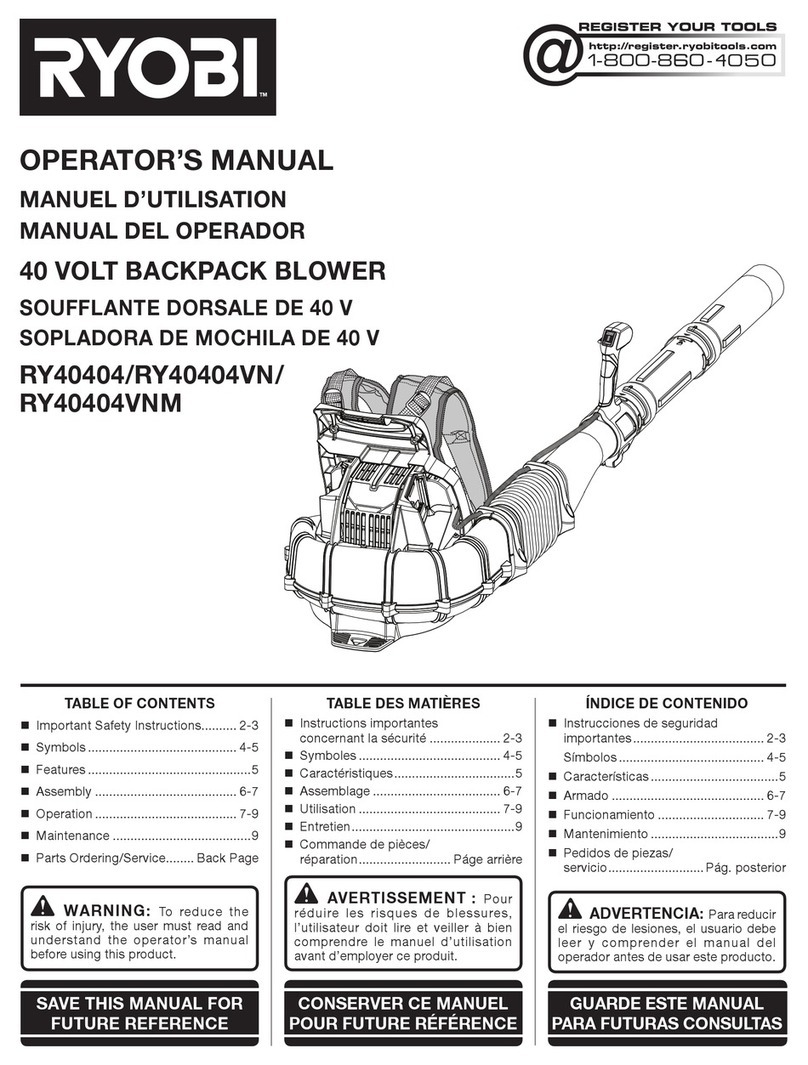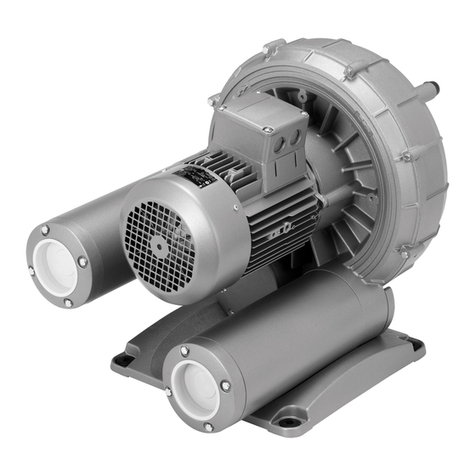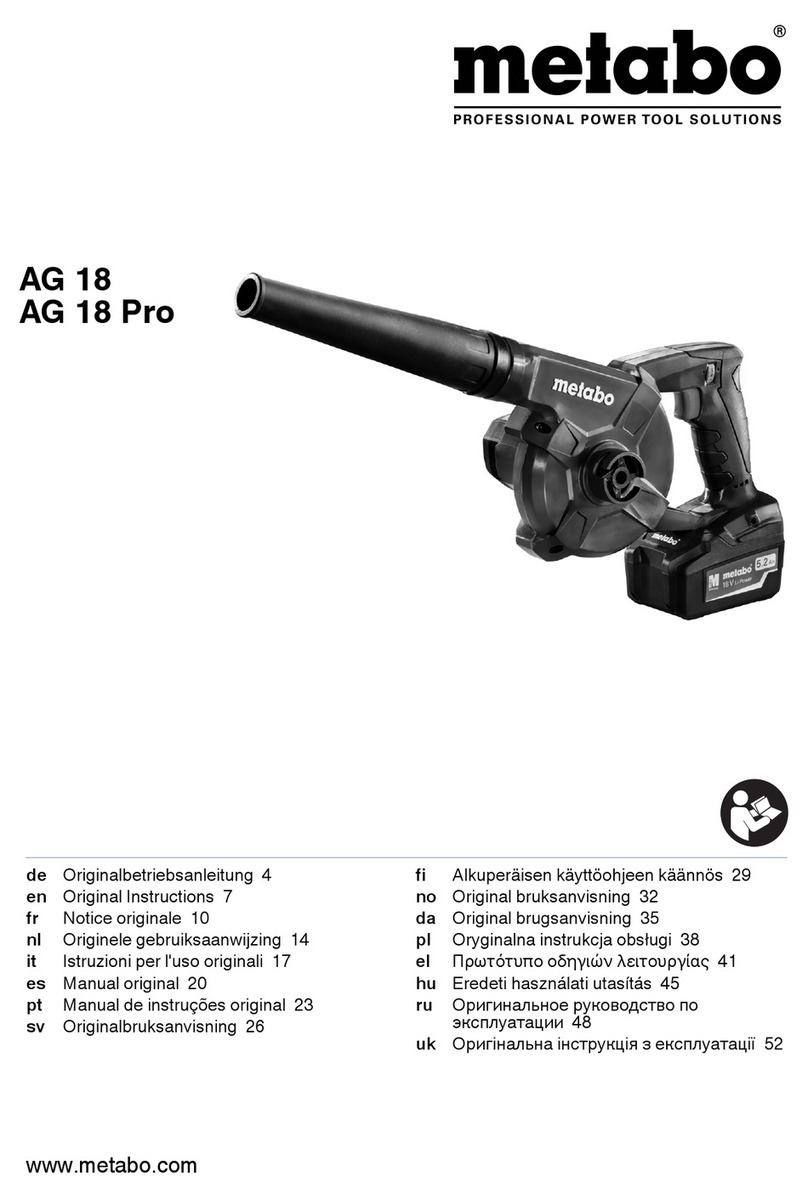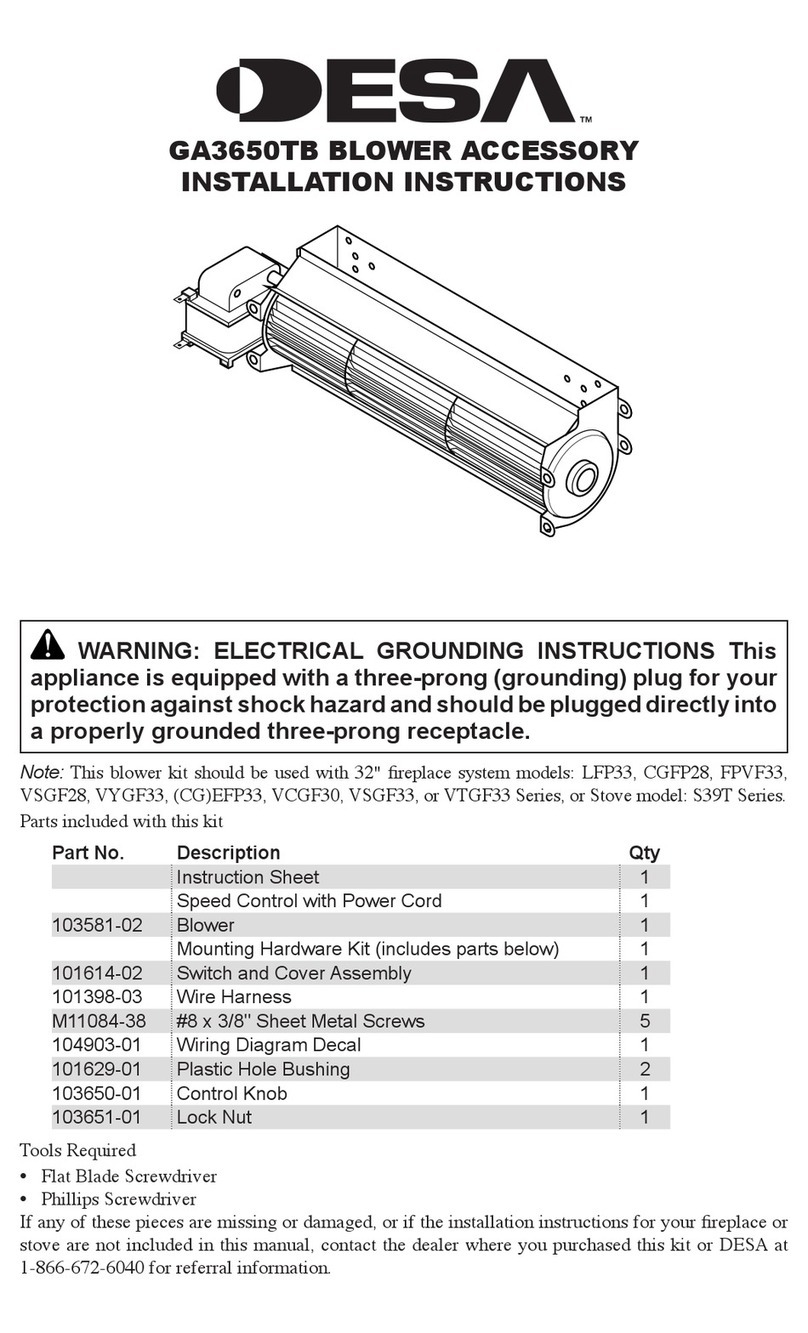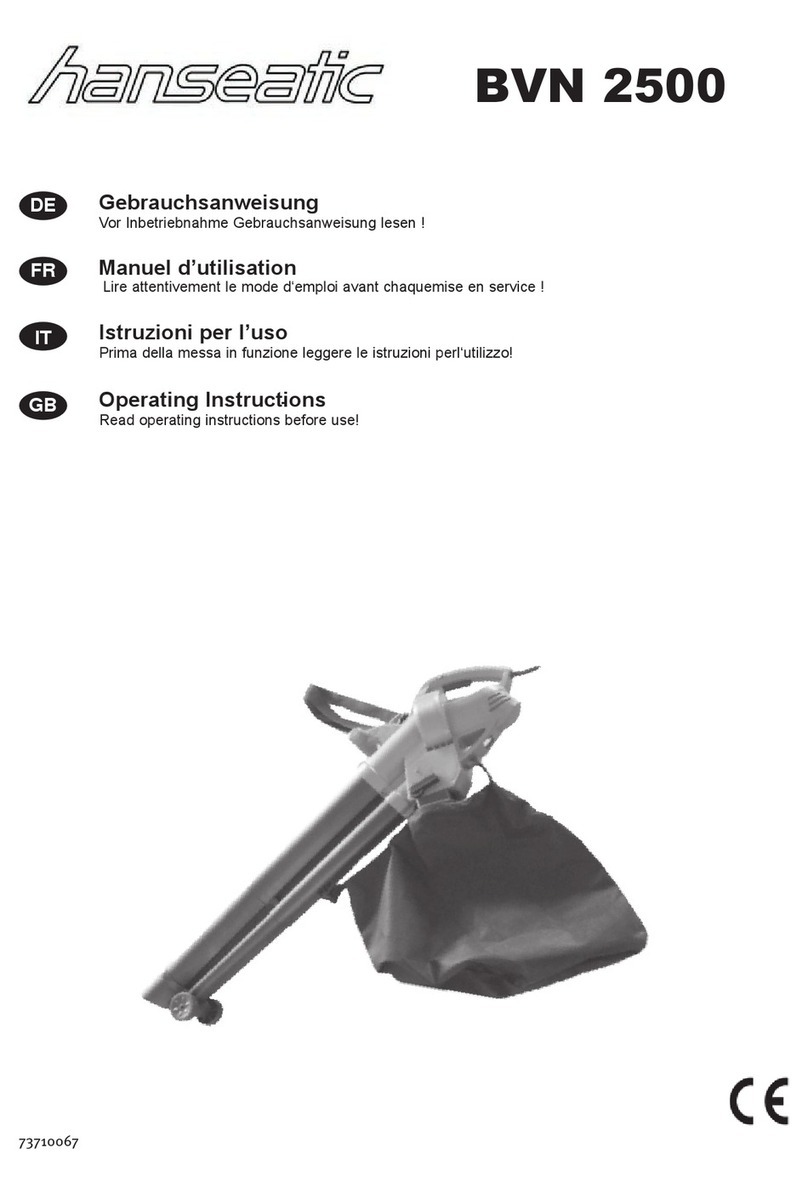
Important Safe Operation Practices 2
3
Operation
General Operation:
1. Read, understand, and follow all instructions on the machine and in
the manual(s) before attempting to assemble and operate. Keep this
manual in a safe place for future and regular reference and for ordering
replacement parts.
2. Be familiar with all controls and their proper operation. Know how to stop
the machine and disengage them quickly.
3. Never allow children under 14 years of age to operate this machine.
Children 14 and over should read and understand the instructions and
safe operation practices in this manual and on the machine and be trained
and supervised by an adult.
4. This leaf blower is a powerful tool, not a plaything. Therefore, exercise
extreme caution at all times. It has been designed to perform one job;
to blow leaves and light debris from outdoor areas. Do not use it for any
other purpose.
5. Keep the area of operation clear of all persons, particularly small children
and pets. Stop the engine when they enter the machine’s vicinity
6. Always wear safety glasses or safety goggles during operation and while
performing any adjustment or repair to protect eyes from debris or
foreign objects that may be thrown from machine. Always use a face or
dust mask, if normal operation is dusty.
7. Wear close fitting slacks and shirt. Shirt and slacks that cover the arms and
legs are recommended. Do not wear loose fitting clothes or jewelry and
secure hair so it is above shoulder level. They can be caught in moving
parts.
8. Do not operate the machine while under the influence of alcohol or drugs.
9. Never place your hands or any part of your body or clothing near rotating
parts. Keep clear of the discharge opening at all times. Never insert
your hands, fingers, feet, or any other part of your body or clothing into
the discharge or air intake openings as the rotating impeller inside the
housing can cause serious injury.
10. Never operate machine without directional discharge chute and plastic
impeller guard properly affixed to machine. These devices shield the
operator from accidental contact with the rotating impeller.
11. Keep all guards and safety devices in place and operating properly.
12. Exercise caution when operating blower. Do not allow the directional
discharge chute to point in the direction of bystanders or pets.
13. If your machine should start making an unusual noise or vibration,
immediately stop the engine, disconnect the spark plug wire and move
the wire away from the spark plug. Allow the machine to cool and perform
the following steps:
a. Inspect for damage.
b. Repair or replace any damaged parts.
c. Check for any loose parts and tighten to assure continued safe
operation.
14. Muffler and engine become hot and can cause a burn. Do not touch.
15. Do not allow leaves or other debris to build up on engine’s muffler. The
debris could ignite and cause a fire.
16. Do not operate engine if air cleaner or cover over carburetor air intake is
removed, except for adjustment. Removal of such parts could create a fire
hazard.
17. Only use accessories approved for this machine by the manufacturer.
Read, understand, and follow all instructions provided with the approved
accessory.
18. Only operate machine in daylight or good artificial light. Do not operate
machine in dark areas where your vision may be impaired.
19. Never pick up or carry machine while the engine is running.
20. If situations occur which are not covered in this manual, use care and good
judgment. Contact Customer Support for assistance or the name of the
nearest service dealer.
Children
Tragic accidents can occur if the operator is not alert to the presence of small
children. Children are often attracted to the blowing activity. Never assume that
children will remain where you last saw them.
1. Keep children out of the work area and under the watchful eye of a
responsible adult other than the operator.
2. Be alert and turn the machine off if a child enters the area.
3. Never allow children under the age of 14 to operate the leaf blower.
Service
Safe Handling Of Gasoline:
1. To avoid personal injury or property damage use extreme care in handling
gasoline. Gasoline is extremely flammable and the vapors are explosive.
Serious personal injury can occur when gasoline is spilled on yourself
or your clothes which can ignite. Wash your skin and change clothes
immediately.
2. Use only an approved gasoline container.
3. Never fill containers inside a vehicle or on a truck or trailer bed with a
plastic liner. Always place containers on the ground away from your vehicle
before filling.
4. Remove gas-powered equipment from the truck or trailer and refuel it on
the ground. If this is not possible, then refuel such equipment on a trailer
with a portable container, rather than from a gasoline dispenser nozzle.
5. Keep the nozzle in contact with the rim of the fuel tank or container
opening at all times until fueling is complete. Do not use a nozzle lock-
open device.
6. Extinguish all cigarettes, cigars, pipes and other sources
of ignition.
7. Never fuel machine indoors because flammable vapors will accumulate in
the area.
8. Never remove gas cap or add fuel while engine is hot or running. Allow
engine to cool at least two minutes before refueling.
WARNING! This symbol points out important safety instructions which, if not followed, could endanger the personal safety and/or property of
yourself and others. Read and follow all instructions in this manual before attempting to operate this machine. Failure to comply with these instructions
may result in personal injury. When you see this symbol. HEED ITS WARNING!
DANGER! This machine was built to be operated according to the safe operation practices in this manual. As with any type of power equipment,
carelessness or error on the part of the operator can result in serious injury. This machine is capable of amputating fingers, hands, toes and feet and
throwing debris. Failure to observe the following safety instructions could result in serious injury or death.
CALIFORNIA PROPOSITION 65
WARNING! Engine Exhaust, some of its constituents, and certain vehicle components contain or emit chemicals known to State of California to
cause cancer and birth defects or other reproductive harm.
